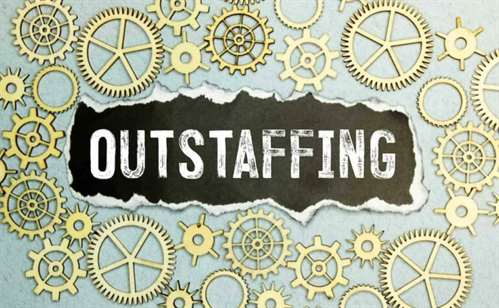Content
- System Design
- Requirement Analysis Phase in SDLC
- What are some of the challenges the Software industry faces now?
- Software Development Life Cycle Tutorial with Examples
- Software Requirement
- Define requirements
- thoughts on “7 Stages/Phases of the Software Development Life Cycle (SDLC)”
- Verification & Validation Model
Creating a proof of concept is also part of this stage, where the technical feasibility is checked and validated before proceeding with the development work. This SDLC model is documentation-intensive, with earlier phases documenting what need be performed in the subsequent phases. In this phase, Developer needs to follow certain predefined coding guidelines. They also need to use programming tools like compiler, interpreters, debugger to generate and implement the code.
Using DORA Metrics to Optimize CI Pipelines – thenewstack.io
Using DORA Metrics to Optimize CI Pipelines.
Posted: Mon, 26 Dec 2022 17:08:51 GMT [source]
Every stage of the V-Shaped model has specific outcomes, making it simple to manage. Perfect for small or medium-sized projects with clear and defined objectives. In addition, HLD should contain information about resources, technologies, and information on possible risks as well as ways to recover the system in case of failure. Take self-driving cars, smart homes, or augmented reality capabilities built into eyewear, for example. All of those things are powered by complex software working behind the scenes. This is where a timeline is chosen, who is responsible for individual parts is determined, and how the needs of the business can be met.
System Design
Developers will collaborate with UX designers to combine all product criteria and consumer feedback before finalizing the design. Some teams may test the software manually or use automated testing tools. Whichever route they decide to pursue, the testing process should ensure each unit of the software works well. After undergoing testing, the software should enter a QA process to validate the product’s quality. Business analysts gather requirements from their customers, target market, and industry experts to create a Business Specification document. Other organizations and teams may refer to this document as Customer Requirement Specification .

The final product doesn’t necessarily have to be what the customer asked for. Incremental Prototype — by using this model, you can break down large projects into manageable parts at each stage, and in the end, these chunks are merged into one product. After the code is generated, it is tested against the requirements to make sure that the products are solving the needs addressed and gathered during the requirements stage. After delivery of the first increment, the system goes into production. The first increment is often a core product where the developer addresses basic requirements and adds new features in the subsequent increments.
Requirement Analysis Phase in SDLC
Generally, there are four to ten steps in the entire SDLC development process. However, the number of steps may slightly differ as per the applied methodology or the business goals. For instance, the Agile development process uses the iterative workflow, while the waterfall approach is a linear and documented process with terminal phases.

Written documentation such as user guides, troubleshooting and FAQ’s can be used to help users with technical queries or solve problems. Documentation can be formal, such as wiring a guide for the application. You can also make comments in the source code explaining why a developer uses a particular procedure. Even software companies that aim to make it intuitive and easy to use can benefit from the documentation.
What are some of the challenges the Software industry faces now?
They also figure out how much time and cost it will take to implement the evaluated needs. Software development life cycle is a series of steps that a team of software developers must follow to develop and maintain software. With the prototype model instead of the actual software being sent to customers for feedback in the testing phase, the prototype is reviewed. The customer still delivers feedback and the prototype is sent back to development to make the changes. Once those changes have been made it’s back to the customer for review.

As it can be a physical room where files are kept, it can also be an online space. With source control applications, you can monitor the work done by individuals. As you proceed with your project, you have to store your development progress frequently. When it comes to spiral development, it can choose models for every step involved in the development process. As some of these models can be used in small-scale projects, others can only be used in large-scale projects.
One man does not make a team, thus, Source Control can help a team of developers to work on the same project in a coordinated manner. Devart offers dbForge Source Control — a powerful SSMS add-in for managing SQL Server database changes in source control systems. Such systems are the most useful for DevOps teams as they help reduce development time and increase the number of successful deployments. In the V-shaped model, the development branch is mirrored by the testing one. These branches form two interdependent processes and allow to eliminate many risks and improve the quality of the final product. It’s important to have a set timeline and milestones so the software developers understand the expectations and you can keep track of the progress in this stage.
Software Development Life Cycle Tutorial with Examples
You can test different aspects of your application and make them work together. After identifying bugs in your program while software testing, you can easily remove them. The feedback has to be clear and straightforward to prevent putting the development process on a wrong track. The Agile model allows you to cloud team promptly receive up-to-date feedback from the users and adjust the development according to it. In this case, the end-user takes an essential part in creating a prototype prior to developing the final product. SRS is a reference for software designers to come out with the best architecture for the software.

Working like an assembly line and moving from one station to another, the 7 phases of the software development cycle are important now more than ever. In our growing economy and fast-paced lifestyles, deadlines have to be met, and nothing can be put on hold. Just how it is unwise to rush into battle without a plan, creating any software without a plan in place can often lead to a train wreck catastrophe. Software development life cycle lays the foundation for all software development methodologies. The SDLC covers almost everything from budgets to documentation writing.
Moreover, by anticipating as many potential issues as possible, SDLC allows to predict the outcome of any given action and, therefore, to prevent mistakes from happening. This approach minimizes waste and increases the overall efficiency of the development. Sometimes we cannot help but wonder why computer programs resemble the work of the human brain so much.
Software Requirement
So, here is what we’ve changed in the traditional Waterfall software development lifecycle to look and feel better in 2023. Despite this, there are times when teams lose time for testing. It can happen due to budget constraints or the pressure to deliver faster. Without it, unnecessary delays and costly mistakes can happen. Sometimes, the entire project may get derailed just because your team members were not actively communicating and continued working without being aware of the problem.
- It’s important to test the software before making it available to users.
- Whenever a user reports a bug or the team discovers a new flaw, the product moves back through its SDLC as many steps as necessary.
- With this approach, both parties integrate their working routines to create and maintain the product.
- The result of this phase is a working software product and a Source Code Document.
- Creating Demo for each user story to demonstrate to the developer and the client that the requirement has been met.
Depending too much on user feedback can potentially lead to a project straying off track. Is a simple diagram that depicts each activity involved in creating a software program. This helps to eliminate waste and improve the development process’ efficiency. Monitoring ensures that the project stays on schedule and is a viable investment for the business. These steps break down the development process into tasks that can be assigned, completed and measured. The requirements are understood and implemented when they come.
Define requirements
If you are looking for a reputed software development partner, you can connect with us for a free 30 minutes consultation. Agile’s biggest strength is its ability to grow throughout the development process. As a result, you will deliver a significantly superior software product by the end of the Agile cycle. Check out Emergent Software’s blog for more helpful resources.
However, the choice of a suitable SDLC model depends on the context of the project and business requirements. You can think of an SDLC model as a set of programming tools that can let you deliver better software. Software Development Life Cycle is a process of developing, modifying, maintaining, and replacing a software system. Discover essential SDLC phases, models, and a real-world application in this article to start building premium software for your enterprise.
This model adopts the best features of the prototyping model and the waterfall model. The spiral methodology is a combination of rapid prototyping and concurrency in design and development activities. This SDLC testing model helps the team to adopt elements of one or more process models like a waterfall, incremental, waterfall, etc. Agile methodology is a practice which promotes continue interaction of development and testing during the SDLC process of any project. In the Agile method, the entire project is divided into small incremental builds. All of these builds are provided in iterations, and each iteration lasts from one to three weeks.
Whenever a user reports a bug or the team discovers a new flaw, the product moves back through its SDLC as many steps as necessary. Some severe defects require updates in the design stage, while most problems take the app back to the development stage. However, the efficiency of the finalized version of the system created can be analyzed only in the next stage – the software testing. Big bang model is focusing on all types of resources in software development and coding, with no or very little planning. In this approach, the whole process of the software development is divided into various phases of SDLC. In this SDLC model, the outcome of one phase acts as the input for the next phase.
Verification & Validation Model
The model implies fulfilling the requirements as they arrive without any deadline ahead. It is crucial for the team to deeply understand the product and its requirements. This helps to break the project into smaller pieces correctly. SDLC is a series of steps for developing, improving, and sustaining a software system.
Operations and Maintenance phase serves as a milestone to the team’s hard work and ensures the survival of the program long past its launch date. Our team runs the program through the network to understand whether the company’s servers can handle the load or not, and if any changes need to be done. During this phase of the Software Development Life Cycle, Developers use an Access Control or Source Code Management program for keeping track of code modifications. They also assist in ensuring that various team initiatives are compatible and that the target goal is fulfilled. Phases in the precise sequence they mentioned here, but you’ll certainly need to do so to complete any project successfully. The SDLC phases can also restart for any new features you may want to add in your next release/update.
